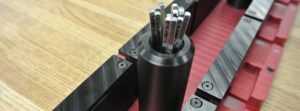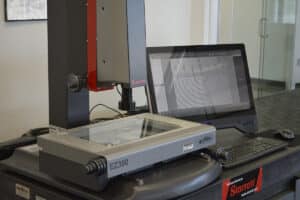Metrology Glossary: Optical Flat
What Is An Optical Flat?
An optical flat is a precisely polished glass or quartz piece with a flat surface, used as a reference to gauge the flatness of other surfaces like optical lenses or mirrors. These flats are typically flat to within a few nanometers. To assess surface flatness, the optical flat is placed in contact with the target surface, and a monochromatic light source (e.g., a laser) illuminates both surfaces. Perfectly flat surfaces result in reflected light waves interfering and forming bright and dark fringes. These fringe patterns provide a means to determine the flatness of the tested surface, typically within nanometer precision.
What Are Optical Flats Used For?
Optical flats find use in multiple industries such as manufacturing and scientific research. These precision tools are instrumental in the production and inspection of optical components such as lenses, mirrors, prisms, and filters. Employing monochromatic light and interpreting interference patterns, optical flats facilitate the identification and measurement of deviations from flatness, ensuring the quality of optical components. Beyond manufacturing, these flats are essential for calibrating measurement instruments such as gauge blocks and interferometers, affirming their accuracy. In the realm of scientific research, optical flats contribute significantly by measuring surface flatness in intricate devices such as microscopes and telescopes and studying the optical properties of materials.








